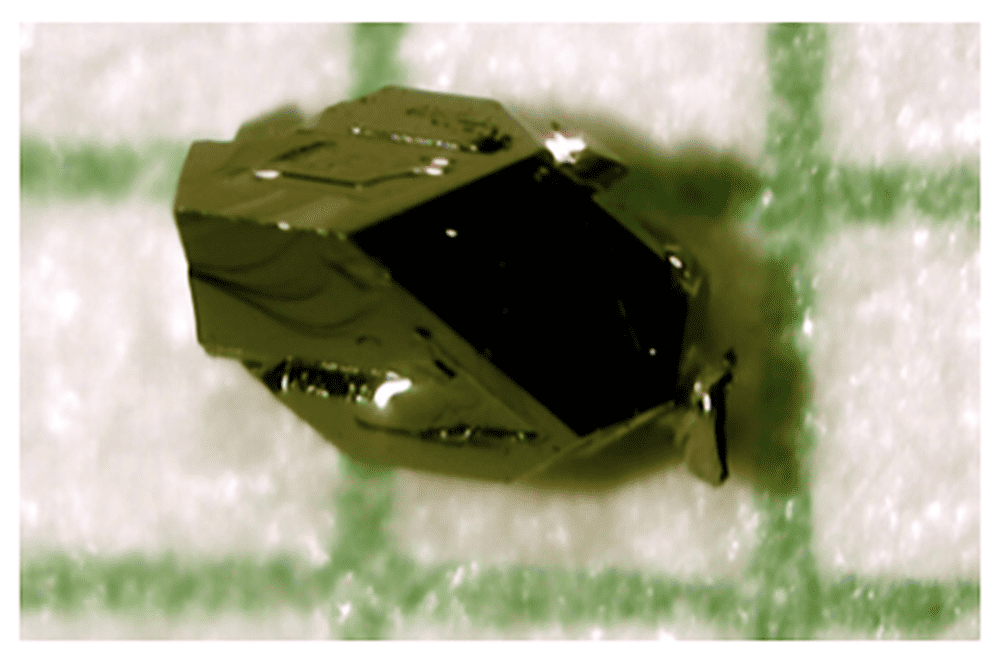
[Image above] Example of a high-quality miassite crystal grown by researchers at Ames National Laboratory. The researchers discovered that miassite, which previously was identified as a superconductor, actually displays unconventional superconductivity. Credit: Paul Canfield, Ames National Laboratory
For all society’s advancements, nature continually finds ways to surprise us and surpass our efforts. Consider the Megalithic Temples of Malta, some of the oldest freestanding structures in the world—they do not hold a torch to the lifetime of Chambers Pillar, which formed naturally in Australia and has towered over the landscape for millennia.
Of course, comparing the durability of artificially and naturally formed stone structures is an unfair analogy weighing heavily in the earth’s favor. But even when we look at advanced technologies that scientists only developed in the past century through dedicated and detailed work, some recent discoveries showed nature can take a fine brush to its creations as well.
Consider the “wow” glass, for example. In November 2023, CTT reported that researchers from Tufts University in Massachusetts and the Italian Institute of Technology’s Center for Cultural Heritage Technology analyzed an ancient Roman glass fragment and found it interacted with light exactly like a modern-day optical fiber.
“It’s really remarkable that you have glass that is sitting in the mud for two millennia and you end up with something that is a textbook example of a nanophotonic component,” says Fiorenzo Omenetto, lead researcher on the project, in a Tufts news release on the discovery.
Now, in a February 2024 open-access paper, researchers led by Ames National Laboratory reported the presence of unconventional superconductivity in a naturally occurring mineral.
Superconductivity is the property of certain materials to conduct electricity without energy loss when cooled below a critical temperature. Conventional superconductors have low critical temperatures and are insensitive to nonmagnetic impurities in their structure. In contrast, unconventional superconductors typically have much higher critical temperatures and are sensitive to defects, which can change or suppress the critical temperature.
Materials that can display superconductivity are extremely rare in nature, and superconducting compounds are even scarcer. Only the mineral covellite (CuS) shows superconductivity in samples that form naturally. Lab-grown samples of three other minerals—parkerite (Ni3Bi2S2), miassite (Rh17S15), and palladseite (Pd17Se15)—are the only other naturally occurring minerals known to display superconductivity.
Until the new study, no research groups had reported seeing unconventional superconductivity in a naturally occurring mineral. But as the Ames-led researchers explained in their open-access paper, the superconducting properties of miassite feature several characteristics that do not align with conventional understanding.
“[Miassite shows] an anomalously high upper critical field greater than 20 T, exceeding the Pauli limit of about 10 T. In contrast, the upper critical field of palladseite is about 3.3 T, below the Pauli limit, while in elemental superconductors, covellite, and parkerite the upper critical field is orders of magnitude smaller,” they write.
Several other variables also defy predictions of the Bardeen–Cooper–Schrieffer theory, which explains the mechanism of conventional superconductivity. These unusual experimental observations “motivated us to clarify its superconducting pairing state,” the researchers write.
They synthesized high-quality miassite crystals using a high-temperature flux growth technique and then used three different tests to analyze miassite’s superconductivity.
The main test they used, London penetration depth, determines how deeply a weak magnetic field can penetrate the superconductor’s bulk from the surface. In conventional superconductors, this length is basically constant at low temperature. But in unconventional superconductors, it varies linearly with temperature.
The researchers found that miassite behaved as an unconventional superconductor in the London penetration depth test. Miassite’s critical temperature and critical magnetic field also behaved as expected for unconventional superconductors when defects were introduced into the mineral’s structure through high-energy electron bombardment.
“[This study] establishes miassite as the only mineral known so far that reveals unconventional superconductivity in its clean synthetic form,” the researchers write. However, it is unlikely that unconventional superconductivity will be present in natural miassite crystals “because of unavoidable impurities that quickly destroy nodal superconductivity,” they clarify.
Regardless, this knowledge will help with the “economically sound applications of superconductors,” says Ruslan Prozorov, professor at Iowa State University and senior physicist at Ames National Laboratory, in an Ames press release.
The open-access paper, published in Communications Materials, is “Nodal superconductivity in miassite Rh17S15” (DOI: 10.1038/s43246-024-00456-w).
